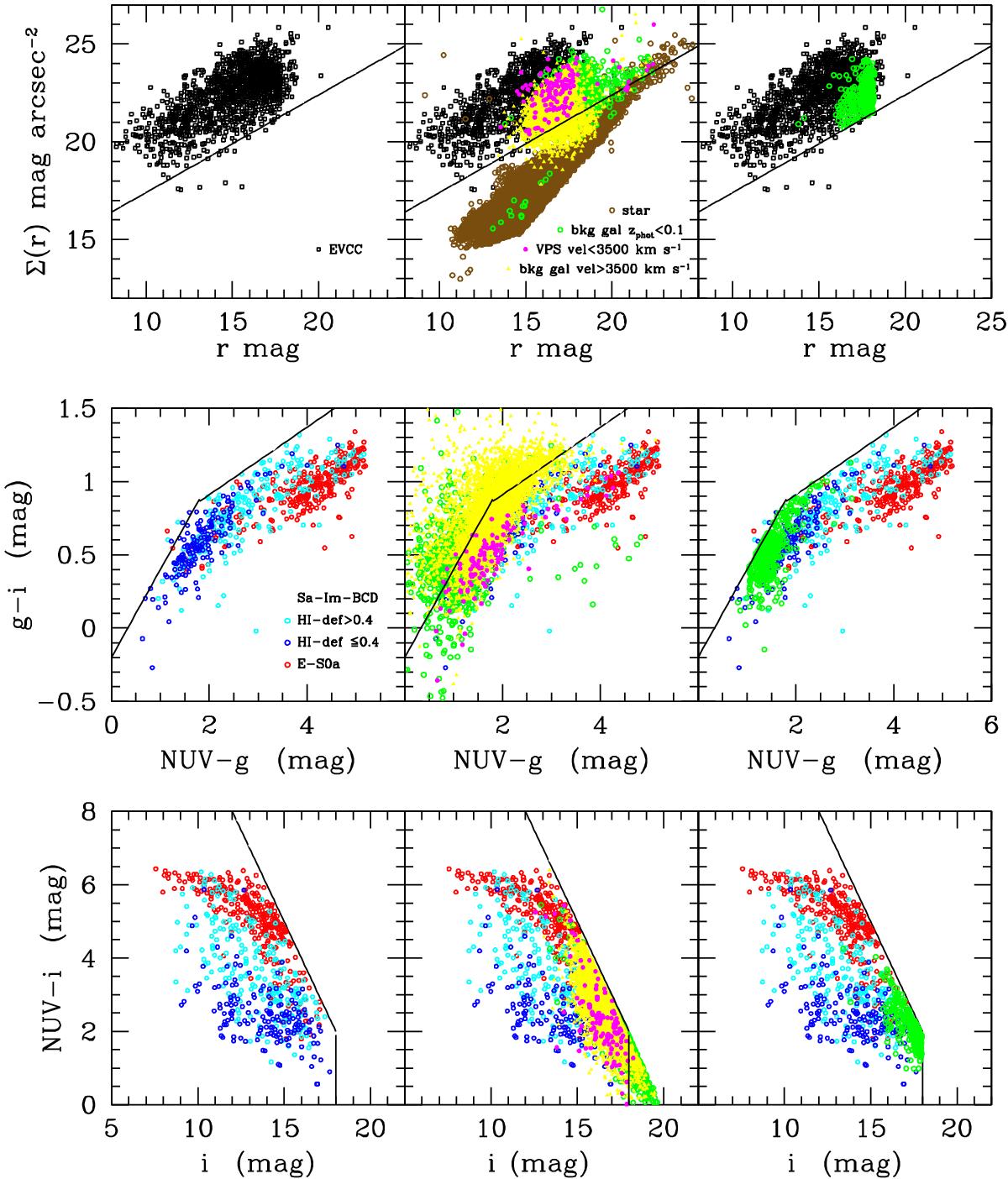Fig. 1

Scaling relations used to identify Virgo cluster possible members: Σ(r) vs. r (upper row), g−i vs. NUV−g (middle row), and NUV−i vs. i (lower row). Left panels: scaling relations of spectroscopically confirmed Virgo members included in the extended source GUViCS catalogue. The black empty squares indicate the local EVCC galaxies. The red, cyan, and blue empty circles in the middle and lower panels indicate the early-type and late-type galaxies, these last selected according to their HI-gas content (HI-def ≤ 0.4, blue symbols; HI-def > 0.4, cyan symbols). The black solid lines indicates the limits in the different scaling relations used to identify possible Virgo cluster members. Central panels: relations drawn when all optically identified galaxies with NUV< 20 mag from the GUViCS VPS catalogue are included. Stars, plotted only in the central upper panel, are indicated with a brown open circle. VPS galaxies with vel ≤ 3500 km s-1 are indicated with magenta filled dots, spectroscopically confirmed background sources with filled yellow triangles, while potential members with photometric redshift ≤0.1 with green empty circles. Right panels: scaling relations of spectroscopically confirmed Virgo members (as in the left panels) with candidate members from the VPS catalogue selected using the criteria given in Sect. 3.3.3 (green empty circles). All these relations are determined using UV data corrected for Galactic dust attenuation.
Current usage metrics show cumulative count of Article Views (full-text article views including HTML views, PDF and ePub downloads, according to the available data) and Abstracts Views on Vision4Press platform.
Data correspond to usage on the plateform after 2015. The current usage metrics is available 48-96 hours after online publication and is updated daily on week days.
Initial download of the metrics may take a while.


